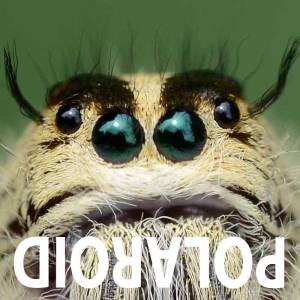The illusion
I have been asked a few times about how I do my macros, but to be perfectly honest, I am a newcomer to macro and although I do understand most of the technicalities involved, I decided to delete the two page essay that I wrote on the subject and instead, decided to talk to you about the illusion.
Macro is not much different than normal photography, in that you decide what you want in focus and what you can live with blurred, but with a depth of field of only half a millimeter to work with, you have to be very selective.
When you pull up your first macro shots onto the hi-def computer screen, there is usually a deflated moan of disappointment as the stark reality of depth of field (DOF) sinks in. "But everyone else's macros are super sharp with acres of DOF, so what am I doing wrong"!
If you asked yourself the above question then you have been taken in by the illusionist and you should go back and have a closer look, or perhaps not! The fact is that the viewer wants to believe in your image and so if you can deliver a few key points of razor sharpness, the viewers brain will fill in the rest. The trick is knowing which bits to deliver.
The general rule of photography is 'focus on the eyes' and this applies to bug shots also, but that is not enough. Generally, you are delving into macro to show a specific feature of the bug, if not then that is the first problem because the available depth of field will not allow you to show the bug in its entirety. Choose one feature, two if you are lucky, plus a piece of eye.
In the above ant shot, the feature that I selected was the near jaw. With experience of shooting ants over the last month, I already knew that both jaws in sharp focus was just not going to happen. But by manipulating the camera angle I was able to cut a slice of ant with the DOF that included the nearest jaw and the eye. With a little more shuffling, I was able to add a hairy leg to the image and the far antenna was a bonus. The illusion was set, the blurry body and far legs merely drop a hint to the viewers brain as to what the rest of the ant looks like.
Viewers like to see the eye facets most of all, you can't usually show the whole eye as it is too large and deep, but just a few facets is enough to set the illusion. Hairs are always fascinating so one or two hairs in focus is enough to set the scene. Mouth parts are powerful too, viewers want to be grossed out by your macro, so details of those alien fingers pulling in the food are always powerful.
Most flying insects have three tiny sensors arranged in a triangle, usually between the eyes and just behind the antennae. It is always a good idea to get at least part of these sensors in focus as part of the eye for a convincing illusion and maybe the root of one of the antennae.
Jumping spiders are a good example of illusion. Such a volumous ball of fluff is impossible to contain within the DOF, but if you can nail the two big eyes, the feelers and a little bit of hairy leg, then the illusion is set, the viewers brain will paint in the rest.
I chose to blip the whole ant today, but there is a powerful crop to be had, taking the focused legs, head and a piece of antenna. This allows more magnification on the blip screen and still there are enough pixels (1200x1200) to go large. I have put this crop in folio.
This particular ant has a very unassuming body and all the interest is around the red head. Had I decided to focus on the body length, I would have lost the hairy legs and antenna and still only captured bits of the body in the depth of field.
There are a couple of other ant species with far more interesting bodies that I will be blipping soon, the body features being powerful enough to carry the image even with the loss of legs and antennae. Hopefully in the next few days, it's all down to the blip monster.
These are purely my thoughts on the subject, right or wrong. You are allowed to disagree and further discussion is welcome, so we can all learn a little more.
Dave
- 34
- 8
- Nikon D7000
- 1/50
- f/8.0
- 105mm
- 400

Comments
Sign in or get an account to comment.


